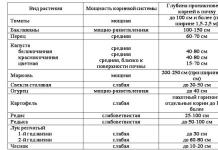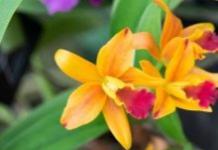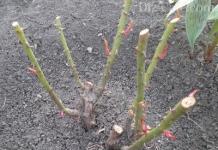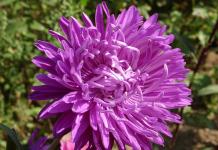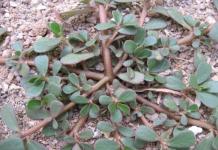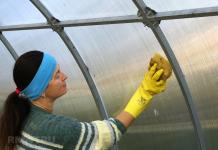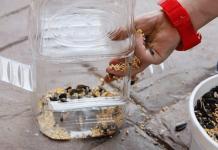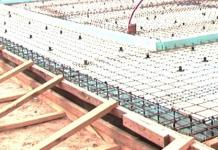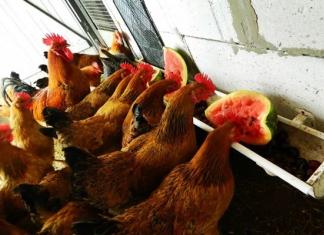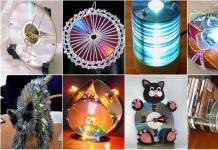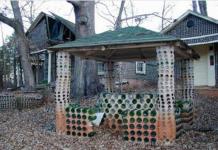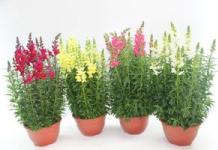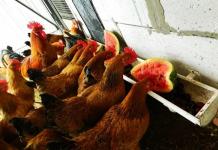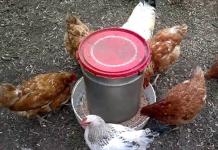Snapdragon is a well-known annual plant, colloquially called “dogs,” due to the structure of the flower. It is good because, if planted correctly and on time, it blooms non-stop throughout the summer. Its color can be very diverse: from white to almost black, its range includes all the colors of the rainbow.
Where snapdragons are planted
Snapdragon, also called antirrhinum, is used to decorate various flower beds and garden beds everywhere. This is an unpretentious plant that pleases the eyes of gardeners, summer residents, and all vacationers; children also like it for its flower shape. The snapdragon flower can be planted as a separate island in a flowerbed, or alternated with other annuals. It looks quite impressive next to flowers such as alyssum, sage, asters, petunia, and marigolds. Many varieties of antirrinum are also planted on balconies or in vases: the ampelous snapdragon is well known.
This flower got its name for its resemblance to a dog or lion's mouth., since in translation from Greek “Antirrinum” means “nose-like”. And if in our country it is often called a dog, then, for example, in Great Britain - a biting dragon, and in France - a cleft palate. The plant has been known for more than 500 years, and in the century before last, breeders began to obtain its various varieties, and by now there are already more than a thousand of them.
 In the wild, antirrinum is a perennial plant, but in our country it is cultivated as an annual. However, if it finds itself in favorable conditions, then with the right agricultural technology, individual bushes can successfully overwinter under very light cover and continue flowering the next year.
In the wild, antirrinum is a perennial plant, but in our country it is cultivated as an annual. However, if it finds itself in favorable conditions, then with the right agricultural technology, individual bushes can successfully overwinter under very light cover and continue flowering the next year.
Various cultivated varieties range in height from 15 cm to a meter, but they are all herbaceous branched bushes with a pyramidal shape. The leaves are green in various shades, sometimes with red veins, but the flowers have a wide variety of colors, including mixed ones. They are quite large, irregularly shaped, double-humped. There are also terry versions of antirrinum.
Depending on the climate zone and the time of planting in the ground, flowering can begin from the very beginning or only from mid-summer, and it continues until frost.
Faded shoots are often broken out, and new, flowering ones appear instead. If you leave the shoots on the bushes, after flowering, fruits (multi-seeded capsules) appear, which contain a huge number of seeds. They ripen in any climate, and preparing your own seeds is not at all difficult. They germinate well, and if properly stored in a dry place, germination does not deteriorate for several years.
As with most garden flowers, in the case of snapdragons, growing from seeds is used. When to plant it in the garden depends on climatic conditions and the possibility of obtaining seedlings: in the southern regions, direct sowing of seeds in open ground is possible, and in the central and northern regions, seedlings of this flower are usually grown on a windowsill or in a greenhouse. Sowing seeds in a garden bed in the south can be done not only in spring (mid-March), but even before winter, however, with the seedless method, flowering can only be expected no earlier than mid-summer.
At home, sowing seeds for seedlings is carried out from late February to mid-March. Since the seedlings will still have to be picked, you can sow them in any small box or box. They do it like this:

While they are waiting for germination, the container with the crops needs basic care: every day the glass must be opened slightly, the condensation must be removed from it, and if the soil surface dries out, it must be sprayed with a spray bottle.
As soon as bluish loops appear on the surface, the temperature must be reduced to about 16 o C: if this is not done, the loops will not only quickly open and turn into seedlings, but will also stretch out in just a couple of days, and the seedlings will be unusable. It will be possible to return the temperature to room temperature in about five days.
At first, seedlings grow very slowly and are susceptible to both disease and simply accidental death from excess moisture or heat. They should be protected from overheating by direct rays of the sun, and watered very moderately., and the first two to three weeks - only by spraying. It is better to do this in the morning and not every day. The slightest waterlogging can cause blackleg disease, which sometimes mows down all the seedlings. Fallen seedlings must be promptly removed using small tweezers, and clean, calcined river sand should be poured in place of the fallen specimen.

Many gardeners pick antirrinum twice, but it must be done correctly at least once. Picking is necessary when two true leaves appear on the seedlings. If there is enough space in the house, you can put the flowers in separate pots; if not, in a larger box. The picking process is no different from that, for example, for tomatoes.
Well-watered seedlings are carefully removed from the box, the central root is lightly pinched and they are planted in a new place, buried almost to the cotyledon leaves. Water well and place in partial shade for several days. Then they return the seedlings to the sunny windowsill and continue caring for them, which includes infrequent watering and a couple of fertilizing. The first feeding with a weak solution of complex mineral fertilizer is carried out a week after picking, the second - after another 15-20 days.
Already when growing seedlings, it makes sense to form future bushes. After 4-6 true leaves appear, the central shoot is pinched, which causes the side shoots to appear. In good conditions, new shoots begin to grow quickly, and if there is time left before planting in the garden, you can pinch them too after they have reached a sufficient length and several leaves have appeared on them.
10-15 days before planting the seedlings, they are accustomed to fresh air, periodically taking them out onto the balcony. In Central Russia, seedlings are moved to the garden bed at the very end of spring or early June.
Antirrinum is able to grow and bloom both in the sun and in semi-shaded places, although in a sunny bed the flowering is somewhat more luxuriant. It is advisable to protect plantings from cold northern winds. You need a bed with soil acidity close to neutral . Planting seedlings is not difficult:

 If the young seedlings of our pet are very tender, then the already grown seedlings after transplanting into the garden bed are completely undemanding to the conditions and require minimal care. It is usual: timely watering (only when the soil dries out), rare fertilizing, loosening the soil and removing weeds. Fertilizing is applied 10-15 days after planting in the garden bed, and then just before the buds open.. They use, for example, azofoska or special flower fertilizers. In addition, tall varieties are sometimes tied to supports.
If the young seedlings of our pet are very tender, then the already grown seedlings after transplanting into the garden bed are completely undemanding to the conditions and require minimal care. It is usual: timely watering (only when the soil dries out), rare fertilizing, loosening the soil and removing weeds. Fertilizing is applied 10-15 days after planting in the garden bed, and then just before the buds open.. They use, for example, azofoska or special flower fertilizers. In addition, tall varieties are sometimes tied to supports.
If you don’t want to get seeds, after the first shoots have flowered, they are removed, thereby prolonging flowering for a long time. It is necessary to cut out the entire arrow, including the lowest fading flower, otherwise new shoots may not form.
This flower gets sick in a flower bed very rarely, only under adverse weather conditions or an unprecedented invasion of any infections. Therefore, flower growers almost never even carry out preventive spraying, and in case of any trouble, they look for recommendations for treatment in special literature.
Growing in pots
Ampel varieties of flower and berry crops are those that are usually planted in hanging pots or planters, and the stems with flowers and berries hang down. Such options greatly decorate the garden or balcony, and in the case of, for example, strawberries allow you to get fragrant berries even at home. Ampelous varieties also exist in snapdragon. These are, for example, Magic, Lampion F1, Amulet, etc. They give hanging flowering shoots up to a meter long.

Sowing seeds and starting growing seedlings of ampelous varieties are no different from ordinary ones. Subtleties begin when the seedlings grow up. The differences in growing the ampelous variety are as follows:
- it is not pinched;
- planted not in a garden, but in containers with a capacity of 3 liters or more, and these should be containers of approximately the same size in all dimensions;
- they dive necessarily twice (the second time - in the phase of 4 true leaves, it is possible already directly into the container where it is supposed to bloom);
- after flowering, many lovers do not destroy the contents of the pots, but leave it until spring: ampelous varieties reproduce perfectly by self-sowing and, by covering the container with a film at the end of winter, you can get new plants in it.
Snapdragon is one of the most beloved flowers in our dachas, it can be found in any climatic zone. Difficulties in growing it lie in wait only at the first stage of obtaining seedlings, and the grown flowers are so unpretentious that they do not cause problems even for the most inexperienced summer resident.
Antirrhinum belongs to the Norichinaceae family. In the Mediterranean, this plant is considered a perennial, but in our harsh, frosty winter latitudes it is grown as an annual.
It is rightfully in demand in gardening and floriculture, although planting and caring for this plant has some distinctive features.
Flowerbed lovers often ask questions:
- Are frosts dangerous for annuals?
- Is pinching important?
- grow seedlings or sow in the ground?
Varieties
The throat stalk branches well, creating a compact dense bush, reaching a height of 20 to 150 centimeters. The flower is large and in shape resembles the open mouth of an animal, for which they are called dogs in conversation. Bright with a pronounced aroma, they are collected in spicate or racemose inflorescences. The coloring is so diverse and depends on the type of antirrhinum. The most popular are white, lilac, yellow, red flowers.
Currently, flower growers are growing about 900 different varieties, which, in turn, , are divided into one and a half dozen groups:
- tall 150–160 cm in height;
- tall up to 100 cm;
- medium-sized up to 60–70 cm;
- short, up to 40–50 cm;
- dwarf up to 20–25 cm.
In tall varieties There is one main distinctive detail - the central stem of the flower rises above the side stems, creating a peduncle with large strong inflorescences.
All medium-sized varieties branch well and differ radically in flowering time. So, among them you can find early and late species of this annual.
Low-growing varieties of “dogs” have the shape of a ball with many stems, form miniature bushes, and the size of the flowers is smaller than those of tall relatives.
All varieties are divided into several classes

They are also traditionally divided according to flowering time., like all other garden flowers:
- early start of flowering, the first flowers open in May;
- medium term, bloom no earlier than July;
- late flowering period, flowers appear closer to August.
Planting and care
Antirrinum is a very light-loving flower, and if there is a lack of heat, it slows down its growth and seed production. Can tolerate light frosts down to -5–0 degrees.
Dogs are grown on any soil, but it has been noted that they grow better in light, fertile soil. When choosing a place for sowing in the front garden, look for a sunny, bright place, protected from drafts.
Growing from seeds
Antirrinum is grown as an annual plant by sowing seeds onto seedlings or directly into the ground. Each of these methods has a number of advantages.
Planting seeds in the soil.
 This method is suitable for gardeners living near a greenhouse, in their home or in their country house. The easier it will be to monitor sowing and seedlings. Sometimes it seems that planting directly into the ground is much easier, but whether your young animals will survive or not depends entirely on how they are cared for. Antirrinum seeds are sown in the soil in late autumn or early spring at the beginning of April. It is not afraid of cold weather and also tolerates spring night frosts well.
This method is suitable for gardeners living near a greenhouse, in their home or in their country house. The easier it will be to monitor sowing and seedlings. Sometimes it seems that planting directly into the ground is much easier, but whether your young animals will survive or not depends entirely on how they are cared for. Antirrinum seeds are sown in the soil in late autumn or early spring at the beginning of April. It is not afraid of cold weather and also tolerates spring night frosts well.
The seeds are placed into the soil directly into the flowerbed and are not covered with soil. Antirrinum seeds are too small, so for even distribution over the surface it is better to mix them with sand. The bed on which the flower bed will be located will need care, it needs to be well cleaned of grass and weeds, because young bores will choke. When the first shoots appear, the flower needs care, weeding and regular, careful watering.
The grown flowers are thinned out so that the distance between them remains from 15 to 25 cm. The "dogs" grown in the ground begin to bloom much later around July and end early due to the threat of cold weather.
Planting Antirium seeds for seedlings
This concern begins from the first ten days of February until the beginning - mid-April. Seedlings from seedlings will bloom much earlier and already in early May they will delight you with their diversity. The process of growing seedlings Antirrinum has its own distinctive features, which it is advisable for every gardener to know and apply:

Already partially flowered seedlings are planted in the front garden. To ensure lush flowering, choose the most open and sunny place. Before planting seedlings, it is advisable to flavor the soil with peat and add a little sand for looseness. Leave 20–25 cm between seedlings for free growth. But depending on the type of plant, the distance may be increased.
Snapdragon care
This flower is a rather unpretentious and unpretentious plant; all you need is weeding, protection from pests and regular watering. Must follow Make sure that the flower is not flooded, as this may cause the roots to become sick and your flowerbed will die. You can control humidity if you mulch the soil with peat, sawdust or old grass.
Feeding an annual flower
Even on poor soils you can grow a beautiful and healthy plant if you fertilize it on time. It is advisable to carry out the first feeding 15–20 days after the seedlings have moved to the flowerbed. All subsequent fertilizer applications should be carried out at the same two-week intervals throughout the flowering period. For this purpose, weak solutions of bird droppings or mullein, as well as weed infusion, are suitable.
Reproduction of Antirium
To further grow and preserve your favorite varieties of pharynx in the flowerbed, you need to learn how to propagate it correctly. You can do this in several ways:
- sowing seeds;
- cuttings.
 For proper collection Healthy and large individuals select seeds for further reproduction. The seeds of snapdragon are very small, and to prevent them from simply scattering on their own, the seed part of the flower is tied with a cloth and the seeds are allowed to ripen. It is better to save seeds for the future in a cool place and for no more than three years.
For proper collection Healthy and large individuals select seeds for further reproduction. The seeds of snapdragon are very small, and to prevent them from simply scattering on their own, the seed part of the flower is tied with a cloth and the seeds are allowed to ripen. It is better to save seeds for the future in a cool place and for no more than three years.
You need to cut snapdragons in the spring, cutting young shoots from the mother bush, which overwintered indoors, on the veranda or in the winter garden. We move the rooted seedlings to the front garden by the end of May. Planting material obtained in this way begins to flower much earlier than its brothers, and has a prolonged flowering period.
Diseases and pests of antirium
Quite often, seedlings are affected by fungal diseases:
- blackleg;
- septoria;
- fusarium;
- rust.
 To prevent diseases, all damaged bushes are sprayed with biological products, which is repeated after a few days to prevent spread.
To prevent diseases, all damaged bushes are sprayed with biological products, which is repeated after a few days to prevent spread.
Snapdragon is very susceptible to pest attacks, which, in turn, eat away the buds, spoil the stems and leaves of the flower. Most often, the owl harms. Their butterflies lay their eggs on nearby weeds, and the larvae then crawl onto a flowering bush and damage it. To prevent such damage Regularly weed around flowers. Eaten and spoiled plants are treated with special preparations and infusions several times. Snapdragon can bloom and delight the eye almost until October, if severe frosts do not come.
Antirium in landscape design
In the design of flower beds and alpine slides, all kinds of snapdragons are used. A huge variety of varieties and bright colors have made it the leading one among all annual beauties.
Dwarf and low-growing species of the flower are well suited and look good in flower beds, they are planted along the borders or as colored circles and squares on the lawn. There are types of annual pharynx that can be grown on the balcony in a box or in a flower pot. Tall species of antirrhinum suitable mainly for bouquets and will remain in a vase until the crescent moon and will delight with their decorative qualities. Snapdragon flower stalks fit perfectly into many flower arrangements.
Snapdragon flowers
Snapdragon (Antirrhinum), which is also called antirrhinum, is directly related to the genus of herbaceous plants belonging to the plantain family. This genus includes approximately 50 species of perennial plants, including climbers. In the wild, these plants can be found in warm climate zones, and most species are found in North America. In Russia, these flowers are called “dogs”, in England “snapdragon” (biting dragon), in France “cleft mouth”, and in Ukraine “mouths”. "Antirrinum" translated from Greek means "nose-like", "nose-like". The ancient Greek myth telling about Hercules, or more precisely, about his first labor, tells how he defeated the Nemean lion, whose ferocity everyone knew. In honor of the victory, the goddess Flora presented Hercules with a gift - it was a lovely flower called “snapdragon”. From that time on, the Greeks had a tradition of giving snapdragons to heroes. This plant has been cultivated for about five hundred years, and German specialists began breeding it only in the 19th century. During this time, they were able to create approximately 1 thousand varieties of snapdragon, and it is interesting that only 1 species was used to create various varieties, namely, Antirrhinum majus.
Snapdragon Features

This flower is represented by subshrubs, as well as herbaceous plants, which have straight, finely grooved shoots, they are branched and colored green. Their height can vary from 15 to 100 centimeters. The bushes have a pyramidal shape. The leaf plates are alternate on top and opposite on the bottom. Their shape can be lanceolate or oval-elongated, and the color varies from dark to pale green, with the veins colored red. The fragrant flowers are relatively large in size, they are two-lipped and have an irregular shape. There are both double flowers and simple ones (depending on the variety); they are part of spike-shaped inflorescences. Their color can be yellow, soft fawn, white, pink, red (all shades), and there are also varieties with two- and three-color flowers. The fruit is a two-locular multi-seeded capsule. 1 g contains 5–8 thousand seeds. This plant begins to bloom in July and ends after the first autumn frosts.
Often, snapdragons, which grow as a perennial in the wild, are grown by gardeners as an annual. However, if the plant is well cared for and if conditions are favorable, the frost-resistant snapdragon can survive wintering in open ground. Moreover, next year its flowering will be more spectacular. In garden design, such a flower is grown as a border flower, but it can decorate both a flower bed and a green lawn (if snapdragons are planted in groups). This plant is also used to decorate terraces and balconies. Today, ampelous varieties of this flower are becoming increasingly popular among flower growers, for the cultivation of which hanging structures can be used, and they will also become an excellent decoration for galleries and terraces.
Sowing

This plant can be propagated by seeds or by vegetative means. The seeds have good germination for several years. If you live in an area with a relatively mild climate, then sowing the seeds of such a flower can be done directly into open soil. The first shoots can be seen after 2.5–3 weeks, while the seedlings are not afraid of cold snaps that occur at night. In places where spring is relatively cold, this plant is recommended to be grown through seedlings. Growing snapdragons from seeds is very easy.
Seeds are sown in the first days of March. To do this, you will need a bowl with a diameter of at least 10 centimeters, and it should have holes at the bottom for drainage. Coarse sand should be poured onto the bottom, and compost soil mixed with sand should be placed on top of it. Lightly tamp and level the surface, then moisten it a little with a spray gun and distribute the snapdragon seeds mixed with sand, pour a thin layer of the same substrate on top. Water the crops with a fine spray bottle, and then cover the container with clear glass. Every day, condensation must be removed from the surface of the glass, while airing the seedlings and, if necessary, moistening the surface of the substrate from the sprayer. If in the place where the container is located, there will be moderate humidity and heat (23 degrees), then the first seedlings can be seen after half a month. After the first seedlings appear, the container must be transferred to a place that is well lit, but at the same time protected from direct sunlight (so that the seedlings do not stretch out). After the snapdragon begins to sprout en masse (after 3-4 days), the shelter must be removed for good.
Seedling

At first, the plants will grow for quite a long time, and during this period it is especially important to properly moisten the soil. Watering should be done in the morning so that the plants have enough moisture, but not too much. The fact is that waterlogging can cause the development of “black leg”. If the seedling has fallen, it should be carefully removed using tweezers, and the place where it grew should be sprinkled with crushed charcoal or calcined cold river sand should be used for this. After 2 true leaves are formed, the seedlings must be picked into a box or container, and they must be placed so that they are not pressed against each other. You can also use individual pots for picking plants, or you can plant 3 seedlings at once in 1 larger pot. Then the plants should be placed in a well-lit place, but at the same time protected from direct sunlight. After this, you can begin hardening the seedlings. To do this, during the daytime you need to open the window for a while, but you should avoid drafts. When the plant has 4-5 true leaves, it will need to be pinched to increase bushiness, but if the side shoots grow quite quickly, then they should also be pinched.
Planting in open ground

What time should snapdragons be planted?
Snapdragon seedlings should be planted in the last days of May and the first days of June. At the same time, you should not be afraid of cold snaps at night, since these plants tolerate them quite calmly. These flowers can be planted both in a sunny area and in a shaded area, but it is worth considering that it must be protected from gusts of wind and also be well-drained. Suitable soil should be light and rich in nutrients. The best mixture for growing such a flower is a mixture consisting of compost, sand, and peat, which are taken in equal proportions. Soil acidity should be pH 6-8.
How to plant
The distance between the bushes during planting depends on the variety of snapdragon. So, between dwarf varieties there should be a distance of 15 centimeters, between short-growing varieties - about 20 centimeters, between medium-growing ones - 30 centimeters, and between tall ones - from 40 to 50 centimeters. After a bush transplanted into open ground takes root, it will grow quite quickly and become a spectacular flowering plant. We must remember that seedlings must be planted in well-watered soil.
Features of care
Growing

Such a flower is undemanding in care and only needs timely watering, weeding, fertilizing, and also needs to systematically loosen the soil surface. Watering should be done only during drought, but we must remember that this procedure cannot be carried out in the evening. After watering, it will be necessary to loosen the soil surface and perform weeding; this can be done on the same day or every other day. Experts advise tying tall varieties to a support. After the flower begins to fade, it must be removed from the bush, as it takes away the strength of the plant. In order for such a plant to bloom for a long time, it should not be allowed to set seeds; also, after the last flowers wither, you need to cut off the flower shoot. It is necessary to trim the peduncle under the flower located at the very bottom, only in this case new arrows and flowers will grow. The first time you need to feed the snapdragon is after it takes root after transplanting into open soil, and for this you use nitrophoska and organic fertilizers. The plant needs to be fed a second time during budding; in this case, a nutrient solution consisting of potassium sulfate, urea and superphosphate is used, and 1 large spoon of each substance should be taken per bucket of water.
Diseases and pests

It happens that bushes are affected by rust, and red spots appear on their surface. This plant is also susceptible to infection with blackleg, root and gray rot, and septoria. Diseased plants must be destroyed as soon as possible, then the area of soil where they grew must be treated with a fungicidal (antifungal) agent. Pests that pose a danger to snapdragons include fly larvae, scale insects, caterpillars, and butterflies that are capable of laying eggs. It should be remembered that getting rid of diseases or harmful insects is much more difficult than preventing a plant from becoming infected. For the purpose of prevention, it is necessary to follow all recommendations for the care of snapdragons, so it is necessary to promptly destroy diseased and infected specimens with harmful insects; You should not plant flowers very close to each other; it is necessary to water correctly, avoiding waterlogging of the soil; Watering should be done at the root, while ensuring that water does not fall on the surface of the leaf blades.
After flowering

The flowering of such a plant can continue until the first frost in the fall. After autumn sets in, those snapdragon bushes that are cultivated as perennials should be trimmed very short, so that the height of the shoots is about 5–8 centimeters. Then you need to mulch the area, sprinkling it with a layer of dried leaves or sawdust mixed with peat. In the case when you have an annual snapdragon, then after the flowers begin to fade, you should remove them, thereby avoiding self-seeding. After all the flowers on the arrow have withered, it needs to be trimmed as short as possible. This will prevent the seeds from ripening and scattering on the surface of the soil. After the onset of late autumn, it is necessary to dig up the soil where the flowers grew and burn the remains of the snapdragon, as harmful insects can settle on them.
How and when to collect snapdragon seeds

As a rule, most plants collect seeds only after they are fully ripe. However, snapdragon seeds must be collected in the incomplete ripeness phase. Then they are placed in a dry, well-ventilated room for ripening. You need to collect the seeds in a long paper bag (like for a baguette). You need to start collecting seeds only after the fruits located at the bottom of the peduncle have fully ripened. To do this, the top of the peduncle, on which the still green fruits are located, must be cut off and thrown away. On the part of the flower arrow that remains, you need to put a paper bag, tie it with a thread below the fruit. Then all that remains is to trim the stem below the dressing site. Then the inverted bag needs to be hung in a dry and warm place and all that remains is to wait for the ripened seeds to pour out into the bag. Ripe seeds should be poured into a small cardboard box and stored in a dry place where the air temperature will be from 3 to 5 degrees. In this case, the boxes must be protected from water.
Main types and varieties

Today, experts have several classifications of this plant according to various characteristics. The most popular classification is based on the height of the bush. Based on the size of the bush, snapdragon varieties are divided into 5 groups:
- Gigantic- height of the bush is 90–130 centimeters. This plant has a centrally located stem that is much higher than the second-order stems, while there are no third-order stems. Popular varieties: “Arthur” - bush height from 90 to 95 centimeters, cherry-colored flowers; “F1 red XL” and “F1 pink XL” - the bush reaches 1.1 meters, the flowers are red and pink (respectively).
- High- bush height 60–90 centimeters. They are cultivated for cutting, as well as as a vertical accent in groups or in mixborders. The central stem is much higher than the lateral ones. When cut, the flowers of this plant can last for about 7 days or even longer. The most fragrant varieties are those whose flowers are painted in various shades of yellow. Popular varieties: “Anna German” - the flowers are light pink; "Canary" - deep yellow flowers; a mixture of Madama Butterfly varieties - double flowers can be painted in a variety of color shades.
- Medium height (semi-tall)- a bush with a height of 40 to 60 centimeters. The varieties are universal; they are cultivated both for cutting and as a decoration for flower beds. They are distinguished by their strong branching. The central stem is not much higher in height than the lateral ones. Popular varieties: “Golden Monarch” - has a yellow color; "Ruby" - deep pink flowers; “Lipstick silver” - painted whitish-pink.
- Low- height of the bush is 25–40 centimeters. They are cultivated as border or flower bed plants. These varieties have a large number of flowering stems of the second and third order, while the central stem has the same height as the stems of the first order or is slightly lower than them. Popular varieties: "Tip-top", "Hobbit", ampelous hybrid plant "Lampion".
- Dwarf- The height of the bush varies from 15 to 20 centimeters. Varieties are intended for carpet flower beds, ridges, borders, rock gardens. Grow them and as a potted flower. There is strong branching up to the third and fourth order stems, while the central stem is lower or has the same height as the second order stems. Popular varieties: “Sakura Color” - there is a spot on the whitish-pink flowers; "Candy Showers" is an ampel variety.

There is also the very popular Sanderson and Martin snapdragon classification for year-round cut varieties. However, this classification is of interest only to those gardeners who grow snapdragons for sale.

Antirrinum or snapdragon is a perennial, annual or semi-shrub herbaceous ornamental flowering plant, whose homeland is the warm countries of the Mediterranean. In nature, the flower also grows in North America and Europe. The snapdragon plant is also very popular among gardeners. And this is understandable, because the amazing colors of the buds, bizarre flower shapes and long-lasting flowering can decorate any part of the garden throughout the season.
Snapdragon – description, photo 
What does snapdragon look like? The antirrhinum flower is distinguished by green, straight, finely grooved, large stems, the height of which can be from 15 to 100 cm. The plant has opposite lower leaves and oval or lanceolate elongated upper leaves. By the beginning of summer, racemose inflorescences with numerous large, two-lipped flowers form on the stem. They have an irregular shape and can be simple or terry. The color of the flowers can be pink, red, dark brown, orange, yellow, white. There are varieties with flowers painted in two or three colors at once. Snapdragon blooms from the beginning of summer until the onset of autumn frosts. 
In nature, the snapdragon flower is a perennial, however, in regions with cold winters the plant is grown as an annual. Under favorable conditions and good care, antirrhinum can be grown in the garden as a perennial plant. 
Growing snapdragons from seeds
Sowing seeds in open ground

In regions with warm climates, antirrinum can be grown as a perennial by planting the seeds directly in the flower bed. Sowing takes place in early spring or mid to late April. It all depends on the weather in your area. Shoots will appear in about three weeks and can survive even a slight cold snap.
Seeds are planted on a bed prepared in advance in a nesting manner, sprinkled with a thin layer of soil, watered from a watering can with a shower attachment and covered with film. The crops are ventilated daily, and the soil is moistened as necessary. As soon as the seedlings appear, the film is removed on warm days. It is better to leave the shelter at night.
Slightly grown seedlings will need to be thinned out, removing the weakest plants. In order not to damage the roots of closely growing bushes, it is better not to pull out unnecessary seedlings, but to pinch them off. When caring for them, watering should be regular, but not frequent. Seedlings are sensitive to soil moisture, and if it is over-moistened, young plants may develop blackleg disease. It is recommended to water in the early morning.
Growing antirrinum (snapdragon) seedlings

With the seedling method of growing annuals, seeds should be sown in early March. For this purpose, seedling containers with drainage holes are prepared. They can be filled with soil mixture from the store or you can prepare it yourself from compost soil and sand.
Seeding procedure:

Features of caring for snapdragon seedlings
The air temperature for seedling growth should be +20…+23 degrees. They are moistened in a timely manner, and after two true leaves appear, they are placed in disposable cups or other containers. You can use spacious pots by planting three bushes in them at once.
When transplanting seedlings, you can use a special spatula or a simple fork, with which the plants are taken out along with a lump of earth and carefully placed in a pot filled with earth. Antirrinums do not tolerate transplantation well, so everything must be done so as not to damage the roots. The planted plants are carefully watered.
Grow pruned seedlings in a well-lit place, otherwise, with a lack of light, the stems will begin to stretch. When watering the bushes, you should keep in mind that snapdragons do not like waterlogged soil. Constantly wet soil can lead to rotting of the roots and the appearance of a disease such as “blackleg”. However, you cannot overdry the soil.
To stimulate the growth of side shoots of seedlings 10 cm high, pinch the top. At this time they should have 4 or 5 true leaves. After this procedure, the snapdragon will turn into a beautiful, lush bush. If the regrown side shoots begin to grow too actively, you can also pinch them off.
About two to three weeks before planting antirrinum in open ground, the seedlings begin to harden. On warm days it is placed in the garden or on an open balcony. On the first day, plants are hardened for one hour. Every day the time spent by seedlings in the fresh air increases. In the last days before planting, the seedlings should be outside for 24 hours.
Planting snapdragons in open ground 
For the antirrinum, a sunny or slightly shaded area is selected, which should be protected from strong winds.
When to plant snapdragons?
Hardened and grown seedlings can be planted in a flower bed in the garden at the end of May or beginning of June. The weather should be warm, however, the plants can survive small, short-term night frosts.
How to plant a snapdragon?
The soil for antirrinum should be well-drained, nutritious and light. It is best if it consists of compost, sand and peat (1:1:1).
For each bush, a separate planting hole is made, the distance between which depends on the height of the plant:
- Dwarf antirrinums are planted in a flowerbed at a distance of 15 cm from each other.
- There should be a gap of 20 cm between low-growing specimens.
- Tall snapdragon bushes are planted at a distance of 40 or 50 cm from each other. Immediately during planting, it is recommended to install supports near the tall specimens, to which the grown plants will need to be tied.
After planting, the seedlings must be watered.
Snapdragon - care 
Snapdragon is an unpretentious plant that does not require much attention during the season. The bushes will bloom magnificently and for a long time if you follow simple recommendations for caring for them:
- In dry and hot weather, plants require watering. This should be done early in the morning. It is not recommended to water snapdragons at night. If it rains, there is no need to water the flowers.
- After rain or watering, it is recommended to remove weeds and loosen the soil around the plantings approximately once a week. This procedure will prevent the formation of a crust on the soil, and air will flow to the roots of the plants.
- After about two weeks, when the seedlings take root and begin to grow, they are fed with universal fertilizers for flowering plants.
- During budding, it is recommended to feed the bushes with a solution prepared from a mixture of potassium sulfate, urea and superphosphate. To prepare it, take a tablespoon of each fertilizer. The mixture is diluted in 10 liters of water.
- Wilted flowers should be removed regularly so that new buds form more quickly.
- After flowering, fruits begin to form and ripen on the peduncle. If you do not need the seeds, then cut off the faded peduncle under the lowest flower. In this case, after some time, new arrows will appear on the bush and begin to grow, which will soon bloom.
- In regions with not very cold winters, where snapdragon is grown as a perennial plant, in the fall, with the onset of cold days, you need to cut off the plant's stem. The remainder of the stem should have a height of 5 to 8 cm. After this, the bushes are covered with dry leaves or peat mixed with sawdust.
Pests and diseases of snapdragon

By following all the rules for caring for antirrinum, the plants will not be afraid of any diseases or pests. Preventive measures include:
- Moderate moisture of the area.
- Planting bushes at a distance from each other from 15 to 50 cm (it all depends on the variety of snapdragon).
- Specimens affected by pests and diseases must be removed immediately.
- You should water the bushes only at the roots so that water does not get on the leaves.
If pests have settled on the plants, the bushes are treated with insecticidal preparations. Among the pests that are dangerous for snapdragons are egg-laying caterpillars and butterflies, fly larvae, and scale insects.
Among the diseases, the flower can be affected by gray or root rot, black leg and septoria. All these diseases cannot be cured and they quickly spread to other plants. Therefore, diseased bushes are pulled out and burned. The soil on which they grew must be shed with fungicidal antifungal drugs.
The profusely blooming beautiful plant antirrhinum (snapdragon) will decorate the garden with its bright or delicate flowers until late autumn. Its low-growing varieties can be planted in a box or flowerpot and decorated with a balcony or loggia. 
Snapdragon (antirrhinum) is an ornamental plant often found in garden plots. They often decorate flower beds in city parks and boulevards. These flowers are popularly known as “dogs”. The popularity of the plant among summer residents is also explained by the fact that caring for it is not particularly difficult.
Snapdragon
Snapdragon: growing from seeds, when to plant
Peculiarities
Antirrhinum is a herbaceous plant whose straight stems grow up to 1 m in height. Elongated leaves can be either light or dark in color. The flowers have a pleasant aroma and are shaped like an open lion's mouth. This is the secret of such an unusual name. Smooth or double flowers growing at the top of the stem are collected in an inflorescence in the form of a spike.
Snapdragon flower
On a note! The flower is grown on balconies and loggias. On the street it is planted both in flower beds and in hanging structures.
Gorgeous flower bed with antirrinums
A riot of colors of multi-colored snapdragons in a hanging planter
There are antirrinums in white, pink, red and yellow colors. Flowering continues throughout the summer and ends in the fall with the onset of frost. The plant is perennial, but is usually replanted every year. Snapdragon blooms in the year of planting. At the same time, the seed pod ripens.
Antirrinum varieties
Snapdragon large
These plants, depending on the variety, can be either very small or very tall. According to this principle, snapdragons are divided into the following groups.
- Dwarf, maximum 20 cm in length. They decorate borders and flower beds. These antirrinums are grown in pots as indoor plants. Among them there are such varieties as “Sakura Color” and “Candy Showers F1”.
Snapdragon Candy Showers F1 Orange
- short, growing from 25 to 40 cm. They can also be found in borders and flower beds. These include the varieties “Tip-top”, “Lampion”, “Hobbit”.
Snapdragon ampelous “Lampion”
- Average, stretching up to 40–60 cm. Used for landscape design or creating bouquets. The most common are pink “Ruby”, yellow “Golden Monarch” and pale pink “Lipstick Silver”.
Snapdragon (Antirrinum) Golden Monarch
- High, up to 60–90 cm long. They make wonderful fragrant bouquets or original flower beds. A cut flower can stand in water for more than a week. The best of them: terry varieties “Madame Butterfly F1”, yellow “Canary”, pink “Anna German”.
Snapdragon F1 “Madama Butterfly”
- Giants, reaching 1.3 m. These are varieties such as cherry “Arthur F1” and others.
Tulips and snapdragons in one flowerbed
Breeding methods
Antirrinum is usually propagated using seedlings. Tall varieties will bloom later than their low-growing counterparts. This must be taken into account when sowing.
Snapdragon seedlings
On a note! Plant seeds can also be sown directly into open ground. This applies only to low varieties of snapdragon. The right time for sowing is the first ten days of May. Flowering should be expected later than for plants planted by seedlings.
If you do not destroy faded antirrinums, then it is likely that, having survived the winter, their seeds will germinate in thawed soil. Such plants produce strong, lushly flowering bushes.
Vibrant variety of snapdragons
When to plant seeds for seedlings
The time for sowing seeds depends on the climatic conditions of the region and the plant variety. Tall antirrinums are sown in the third ten days of February. Low- and medium-growing - during March. Sowing of dwarf varieties is allowed until April 15.
Snapdragon seeds photo
In the northern regions, snapdragons can only be grown by seedlings. The plant is planted in open ground later due to the fact that cold weather is likely to return throughout almost the entire spring. This must also be taken into account when planting seeds for seedlings. It will not be possible to grow antirrinum as a perennial plant in cold climates.
On a note! Sufficiently developed plants are transplanted into flower beds only in late spring or early summer. During this period, the flowers will not suffer from lower temperatures at night.
Sowing seeds for seedlings step by step
Table. Instructions for growing snapdragons in seedlings.
| For antirrinum seedlings, a universal soil mixture is suitable, which can be purchased at a specialized store. So that the small seeds of the plant can hatch, the soil is sifted and washed sand is mixed into it. The mixture can also be prepared from soil, peat and sand, mixing them in a ratio of 1: 2: 0.5. To protect seedlings from diseases and weeds, it is recommended to steam the soil mixture using a steamer. Steaming for 1 hour will protect the plant from blackleg. In order to make the soil slightly alkaline, after steaming it is necessary to add half a tablespoon of dolomite flour or 1 tablespoon of ash per 0.5 kg of soil. The soil mixture needs to be slightly moistened. | |
| Fill the container with the soil mixture, level the surface and tamp it down quite a bit. Place the seeds on the fold of a piece of paper and carefully spread over the entire surface. Sprinkle soil on top with a layer of no more than 1 cm. | |
| Use a spray bottle to spray the top layer of soil with water. In this case, some seeds may float to the surface. This is not a problem, since they need more light to germinate. | |
| Cover the container with a transparent lid or plastic bag. Then install it in a lighted place. For seedlings to emerge, it is necessary to maintain a room temperature of +21-24°C. The soil must be periodically irrigated with water, otherwise the seeds will dry out and not germinate. | |
| In about a week, the shoots will begin to hatch. After emergence, it is recommended to maintain a temperature of +16+29°C. At first, seedlings grow at a slow pace. At this time, it is especially important not to allow excess water. Watering should be carried out so that moisture does not fall on the leaves. Frequent ventilation is required. The lid of the container must be removed after 7 days. Immediately after this, the plants must be protected from direct sunlight. | |
| With excessive seedling density, they are thinned out using tweezers. | |
| Picking is done after the first two true leaves grow. Snapdragon is not afraid of this procedure. In the new place he will feel good almost immediately. The same soil mixture is suitable, but without preliminary sifting and steam treatment. Fill cups or pots with soil and lightly compact the soil. Then you need to make holes so that there is enough space for the roots. Deepen the sprout by 3 mm and sprinkle with soil. Lightly compact the soil, otherwise the sprout may tilt when wet. | |
| After picking, the seedlings must be carefully watered. In this case, it is advisable to hold the sprouts until the moisture is completely absorbed. | |
| It is recommended to apply liquid fertilizer to the soil once every 14 days. Grown seedlings can be pinched between the fourth and fifth pairs of leaves to improve growth and further lush flowering. | |
| In the second decade of May, you can plan to transfer the seedlings to open ground. Snapdragons require a well-lit place. In shady areas, antirrinum will not bloom so profusely. If the seedlings have been hardened, then they are not afraid of even slight frosts. The soil must be loose for good plant growth. Fertile, slightly alkaline soil is suitable (otherwise the roots will not be developed enough). Heavy soil must be diluted with sand, dolomite flour or ash. Before planting seedlings, mineral fertilizer should be added to the soil, including phosphorus, potassium and nitrogen. | |
| Holes for planting must be dug at a distance of up to 45 cm from each other, depending on the height of the future plant. The specified distance between plants must be maintained if a tall variety is planted. For medium-sized antirrinums, this interval is 30 cm. And plants of small varieties of snapdragons will get along well at a distance of 20 cm between them. | |
| Planting must be completed with generous watering, after which it is necessary to cover the soil with a layer of peat. |
Snapdragon in composition with other flowers
Arrangement using snapdragon flowers
Video - How best to sow snapdragons
Plant care
Further care of the plant does not require much effort. It needs to be weeded periodically, and the antirrinum also needs frequent loosening of the soil. During the period of active growth, the crop should be fed with a complex of mineral fertilizers. It is undesirable to allow both waterlogging of the soil and lack of moisture. Watering should be done moderately. Wilted inflorescences must be removed in a timely manner.
Antirrhinum (snapdragon). Types and timing of work during cultivation
Snapdragon - cultivation and care
Diseases of the snapdragon
If the root system of seedlings is exposed to excess moisture, the antirrinum may develop root rot. This can completely ruin the seedlings. You can cope with the problem with the help of a drug called “Hom”. A teaspoon of the product is diluted with 1 liter of water and the seedlings are treated. Repeated treatment is carried out after transferring the plants to open ground. To do this, take 1 liter of solution per 10 m2 of flower bed. The procedure must be done before flowering.
Diseases and pests of antirrinum
Cool, damp summers provide suitable conditions for rust development. Red spots quickly spread on the foliage, leading to the death of the flower. It is recommended to combat this disease with the help of special fungicides (Cumulus, Strobi, Abiga-Pik, Polyram) and one percent Bordeaux mixture. Products containing sulfur are effective. Plants affected by the disease must be burned.
"Strobe"
"Abiga Peak"
On a note! Gray spots with yellow edging on snapdragon leaves indicate infection with septoria. This usually happens in hot but rainy summers. To eliminate the infection, such products as “Skor”, “Previkur”, “Fundazol”, “Acrobat MC”, “Ordan”, “Profit Gold” are used.
"Fundazol"
The following pests pose a danger to snapdragons:
- scoop;
- slugs;
- avocado scale insect;
- root-knot nematode.
To destroy them, the plants and the land on which they are planted should be treated with insecticides. Infected bushes must be removed from the flowerbed and burned.
Snapdragon is a beautiful flower that is undeservedly forgotten by many flower growers.
Until late autumn, snapdragon is able to surprise with its lush color, as it is not afraid of light frosts. If you follow simple rules, every amateur gardener can plant and successfully grow these colorful flowers on their own plot.
Snapdragon (antirrhinum) is an ornamental plant often found in garden plots. They often decorate flower beds in city parks and boulevards. These flowers are popularly known as “dogs”. The popularity of the plant among summer residents is also explained by the fact that caring for it is not particularly difficult.

Antirrhinum is a herbaceous plant whose straight stems grow up to 1 m in height. Elongated leaves can be either light or dark in color. The flowers have a pleasant aroma and are shaped like an open lion's mouth. This is the secret of such an unusual name. Smooth or double flowers growing at the top of the stem are collected in an inflorescence in the form of a spike.

On a note! The flower is grown on balconies and loggias. On the street it is planted both in flower beds and in hanging structures.


There are antirrinums in white, pink, red and yellow colors. Flowering continues throughout the summer and ends in the fall with the onset of frost. The plant is perennial, but is usually replanted every year. Snapdragon blooms in the year of planting. At the same time, the seed pod ripens.
Antirrinum varieties

These plants, depending on the variety, can be either very small or very tall. According to this principle, snapdragons are divided into the following groups.
- Dwarf, maximum 20 cm in length. They decorate borders and flower beds. These antirrinums are grown in pots as indoor plants. Among them there are such varieties as “Sakura Color” and “Candy Showers F1”.

- short, growing from 25 to 40 cm. They can also be found in borders and flower beds. These include the varieties “Tip-top”, “Lampion”, “Hobbit”.

- Average, stretching up to 40–60 cm. Used for landscape design or creating bouquets. The most common are pink “Ruby”, yellow “Golden Monarch” and pale pink “Lipstick Silver”.

- High, up to 60–90 cm long. They make wonderful fragrant bouquets or original flower beds. A cut flower can stand in water for more than a week. The best of them: terry varieties “Madame Butterfly F1”, yellow “Canary”, pink “Anna German”.

- Giants, reaching 1.3 m. These are varieties such as cherry “Arthur F1” and others.

Breeding methods
Antirrinum is usually propagated using seedlings. Tall varieties will bloom later than their low-growing counterparts. This must be taken into account when sowing.

On a note! Plant seeds can also be sown directly into open ground. This applies only to low varieties of snapdragon. The right time for sowing is the first ten days of May. Flowering should be expected later than for plants planted by seedlings.
If you do not destroy faded antirrinums, then it is likely that, having survived the winter, their seeds will germinate in thawed soil. Such plants produce strong, lushly flowering bushes.

When to plant seeds for seedlings
The time for sowing seeds depends on the climatic conditions of the region and the plant variety. Tall antirrinums are sown in the third ten days of February. Low- and medium-growing - during March. Sowing of dwarf varieties is allowed until April 15.

In the northern regions, snapdragons can only be grown by seedlings. The plant is planted in open ground later due to the fact that cold weather is likely to return throughout almost the entire spring. This must also be taken into account when planting seeds for seedlings. It will not be possible to grow antirrinum as a perennial plant in cold climates.
On a note! Sufficiently developed plants are transplanted into flower beds only in late spring or early summer. During this period, the flowers will not suffer from lower temperatures at night.




Sowing seeds for seedlings step by step
Table. Instructions for growing snapdragons in seedlings.
| Steps, photo | Description of actions |
|---|---|
| For antirrinum seedlings, a universal soil mixture is suitable, which can be purchased at a specialized store. So that the small seeds of the plant can hatch, the soil is sifted and washed sand is mixed into it. The mixture can also be prepared from soil, peat and sand, mixing them in a ratio of 1: 2: 0.5. To protect seedlings from diseases and weeds, it is recommended to steam the soil mixture using a steamer. Steaming for 1 hour will protect the plant from blackleg. In order to make the soil slightly alkaline, after steaming it is necessary to add half a tablespoon of dolomite flour or 1 tablespoon of ash per 0.5 kg of soil. The soil mixture needs to be slightly moistened. |
| Fill the container with the soil mixture, level the surface and tamp it down quite a bit. Place the seeds on the fold of a piece of paper and carefully spread over the entire surface. Sprinkle soil on top with a layer of no more than 1 cm. |
| Use a spray bottle to spray the top layer of soil with water. In this case, some seeds may float to the surface. This is not a problem, since they need more light to germinate. |
| Cover the container with a transparent lid or plastic bag. Then install it in a lighted place. For seedlings to emerge, it is necessary to maintain a room temperature of +21-24°C. The soil must be periodically irrigated with water, otherwise the seeds will dry out and not germinate. |
| In about a week, the shoots will begin to hatch. After emergence, it is recommended to maintain a temperature of +16+29°C. At first, seedlings grow at a slow pace. At this time, it is especially important not to allow excess water. Watering should be carried out so that moisture does not fall on the leaves. Frequent ventilation is required. The lid of the container must be removed after 7 days. Immediately after this, the plants must be protected from direct sunlight. |
| With excessive seedling density, they are thinned out using tweezers. |
| Picking is done after the first two true leaves grow. Snapdragon is not afraid of this procedure. In the new place he will feel good almost immediately. The same soil mixture is suitable, but without preliminary sifting and steam treatment. Fill cups or pots with soil and lightly compact the soil. Then you need to make holes so that there is enough space for the roots. Deepen the sprout by 3 mm and sprinkle with soil. Lightly compact the soil, otherwise the sprout may tilt when wet. |
| After picking, the seedlings must be carefully watered. In this case, it is advisable to hold the sprouts until the moisture is completely absorbed. |
| It is recommended to apply liquid fertilizer to the soil once every 14 days. Grown seedlings can be pinched between the fourth and fifth pairs of leaves to improve growth and further lush flowering. |
| In the second decade of May, you can plan to transfer the seedlings to open ground. Snapdragons require a well-lit place. In shady areas, antirrinum will not bloom so profusely. If the seedlings have been hardened, then they are not afraid of even slight frosts. The soil must be loose for good plant growth. Fertile, slightly alkaline soil is suitable (otherwise the roots will not be developed enough). Heavy soil must be diluted with sand, dolomite flour or ash. Before planting seedlings, mineral fertilizer should be added to the soil, including phosphorus, potassium and nitrogen. |
| Holes for planting must be dug at a distance of up to 45 cm from each other, depending on the height of the future plant. The specified distance between plants must be maintained if a tall variety is planted. For medium-sized antirrinums, this interval is 30 cm. And plants of small varieties of snapdragons will get along well at a distance of 20 cm between them. |
| Planting must be completed with generous watering, after which it is necessary to cover the soil with a layer of peat. |


Video - How best to sow snapdragons
Plant care
Further care of the plant does not require much effort. It needs to be weeded periodically, and the antirrinum also needs frequent loosening of the soil. During the period of active growth, the crop should be fed with a complex of mineral fertilizers. It is undesirable to allow both waterlogging of the soil and lack of moisture. Watering should be done moderately. Wilted inflorescences must be removed in a timely manner.


Snapdragon - cultivation and care
Diseases of the snapdragon
If the root system of seedlings is exposed to excess moisture, the antirrinum may develop root rot. This can completely ruin the seedlings. You can cope with the problem with the help of a drug called “Hom”. A teaspoon of the product is diluted with 1 liter of water and the seedlings are treated. Repeated treatment is carried out after transferring the plants to open ground. To do this, take 1 liter of solution per 10 m2 of flower beds. The procedure must be done before flowering.

Cool, damp summers provide suitable conditions for rust development. Red spots quickly spread on the foliage, leading to the death of the flower. It is recommended to combat this disease with the help of special fungicides (Cumulus, Strobi, Abiga-Pik, Polyram) and one percent Bordeaux mixture. Products containing sulfur are effective. Plants affected by the disease must be burned.


On a note! Gray spots with yellow edging on snapdragon leaves indicate infection with septoria. This usually happens in hot but rainy summers. To eliminate the infection, such products as “Skor”, “Previkur”, “Fundazol”, “Acrobat MC”, “Ordan”, “Profit Gold” are used.


The following pests pose a danger to snapdragons:
- scoop;
- slugs;
- avocado scale insect;
- root-knot nematode.
To destroy them, the plants and the land on which they are planted should be treated with insecticides. Infected bushes must be removed from the flowerbed and burned.

Until late autumn, snapdragon is able to surprise with its lush color, as it is not afraid of light frosts. If you follow simple rules, every amateur gardener can plant and successfully grow these colorful flowers on their own plot.
Family Plantaginaceae - Plantains.
Genus Antirrinum - Antirrinum, Snapdragon.
Snapdragon, Gueule de loup, Dog's Mouth, Lion's Mouth, Toad's Mouth, Dogs, Mouths.
Antirrinum, Snapdragon – caring for the plant on the balcony and in the garden.
Snapdragon - caring for the plant on the balcony and in the garden.

Snapdragon, origin and its appearance.
Lives in Southern Europe, North Africa, North America. From Greek, the name “antirrhinum” is translated as “nose-like, nose-like.” The name of the plant is associated with the shape of the flowers, which are very similar to the open mouth of a lion. When you press on the sides of the corolla, the “mouth” opens, revealing the bright interior of the corolla. Perennial herbaceous or subshrub plants with large, finely grooved green stems. The stems are straight, branched, from 15 to 100 cm high, forming pyramidal bushes. The plant produces many stems. There are low-growing varieties, only about 20 cm, and there are tall ones, up to one meter high. The lower leaves are opposite, the upper leaves are alternate, from lanceolate to elongated oval, from light green to dark green in color with red veins, pubescent with thin villi.
The flowers are fragrant, rather large, irregularly shaped, two-lipped, reminiscent of a gaping lion's mouth, simple or double depending on the variety, pubescent on the outside, collected in a racemose inflorescence. The color of snapdragon flowers is white, pink, yellow, pale fawn, all shades of red, there are also two-color and even three-color varieties. A special feature of Antirrinum is that the flower blooms from bottom to top. If faded inflorescences are removed in a timely manner, flowering will continue until late autumn. Blooms from June until frost. The plant blooms for three months. And each individual flower keeps its color for about 12 days. The fruit is a two-locular multi-seeded capsule, with 5,000 to 8,000 seeds in one gram.
Often, snapdragons, which grow as a perennial in the wild, are grown by gardeners as an annual. However, if the plant is well cared for and if conditions are favorable, the frost-resistant snapdragon can survive wintering in open ground. Moreover, next year its flowering will be more spectacular. The most interesting plants that you like can be transplanted into pots in October and brought into a cool room - with a temperature no higher than 15°C, and they will bloom throughout the winter.
Snapdragon produces abundant self-seeding. Flowers are pollinated by bumblebees, which, unlike other insects, can freely penetrate deep into the perianth. In small-flowered varieties, the gap between the petals is very narrow, and bumblebees get to the nectar by making a hole in the tubular part of the corolla.

Snapdragon, care and maintenance indoors and on the balcony.
They serve as an indispensable decoration for balconies, loggias and garden plots. They delight with their blooms all summer and until mid-autumn. Snapdragon is a wonderful sunny annual. Among the undeniable advantages of snapdragon are its unpretentiousness, unusual fancy shape and variety of flower colors, and long-lasting bright flowering. Also, low and hanging varieties perfectly decorate rooms, balconies and terraces in hanging or floor planters.
The plant has low and wide flower brushes, thanks to which during the flowering period your window sill will sparkle with fabulous colors. There are a large number of varieties of antirrinum, which are grouped according to the height and type of branching of the stems, the shape of the inflorescences and the size of the flower. They also differ in terms of flowering time. Hybrid varieties whose shoot height does not exceed 30 cm are also well suited for growing in pots. For growing on a balcony or terrace, shorter (15-20 cm) varieties are usually chosen, spherical in shape, with short but wide flower racemes. In balcony boxes it goes well with plants with large flowers. Light-loving antirrinum is grown on a south, north-east or north-west window or balcony in small flower boxes and pots.
It develops well and blooms profusely only in a sunny place, when it grows in fertile and light, well-drained, not waterlogged soil. Antirrinum tolerates light shading, but with a lack of light it cannot express itself in all its glory. Plants should not grow close to each other. To prevent diseases from appearing, it is advisable to water the snapdragon in the morning, at the root. To extend the period of maximum decorativeness (flowering time) of snapdragons, it is necessary to regularly remove faded inflorescences, and sometimes cut out the entire inflorescence, which ensures the formation of new ones and the continuation of flowering of the remaining flowers. It is better not to wait for the flowers to dry completely, but to pick them off immediately after they begin to wilt.
Of particular interest to gardeners today are ampelous forms of snapdragons, which can be grown in hanging structures to decorate terraces and galleries. At the peak of their decorative form, they have well-developed hanging shoots ranging from 20 cm to 1 meter in length (depending on the variety) and a large number of flowers collected in small racemes. The ampelous snapdragon feels good in partial shade; you should not expose it to the open sun. Care does not require any special procedures, except for plucking faded bunches. When the antirrinum stops blooming, cut off the longest shoots - fresh ones will appear from their axils. When growing next to each other, varieties are pollinated, which leads to a loss of their purity.

The first flowers form already in the first month of summer. Therefore, many gardeners most often use the method of propagation by seedlings: if you follow all the recommendations for growing at home, you can get fairly strong flower seedlings. However, you can save yourself the labor-intensive work and buy ready-made snapdragon flower seedlings. But in this case, it is necessary to carefully inspect the purchased planting material.
It must be of very high quality. Then you will have confidence that beautiful and healthy flowers will grow from it. First of all, you need to pay attention to the leaves and root system. The root system must be well developed. When assessing the condition of the stems, you need to take into account that they should be strong and not too thin, and not thin and weak. The leaves decorating them should be rich green. Much can be learned from the condition of the soil - if it is dry, then, most likely, the seedlings were poorly cared for
The most favorable time for transplanting snapdragon seedlings to a permanent location is the moment when the last wave of frosts has passed and warm weather has set in. At this stage of development, the seedlings will reach a state in which they will look like small bushes. The traditional planting time is the second half of May.
Pruning is aimed at creating a bushy plant instead of a single-stemmed one. When the young seedling reaches a height of 10 cm, its top is pinched. This is enough for a bush to form. If you cut off the arrow under the lowest flower, the plant will put out new flower stalks. Snapdragon forms a highly branched bush, densely covered with small leaves. Just one compact plant, covered with numerous flowers for a long time, gives the impression of a rich bouquet.
Snapdragons that continue to bloom do not necessarily have to be thrown away or doomed to death with the arrival of frost. In the fall, before the onset of negative temperatures, you can simply transfer them to pots, trying to minimally damage the roots, and bring them into the room. There, the snapdragon will remain attractive for a long time and delight you with its flowering. Snapdragon flowers make excellent cut flowers. But it is better to choose for cutting only the inflorescences in which the first flowers have bloomed, and the majority remain closed in buds.

Caring for snapdragons in open ground.
These flowers are resistant to lodging and light-loving, so they are perfect for landscaping sunny spaces. In garden design, antirrhinum is grown as a border plant, although snapdragons look great both in a flowerbed and planted in groups against a green lawn. A multi-colored mixture of varieties of the same height looks especially impressive in the garden. Their bushes planted nearby grow well in width and close together, forming dense multi-colored “pillows”. Bright color spots sometimes cover the green foliage, forming a continuous floral carpet. It fits perfectly into all types of flower beds and looks especially good as a wide stripe along a border or path, as a bright spot or even as a solo ornament in the middle of a summer flower bed.
A wide variety of colors makes it easy to select beautiful combinations of shades in the flowerbed. A multi-colored flowerbed carpet with a complex pattern can be made exclusively from one antirrinum, because the color palette of its colors is so wide that by selecting several contrasting shades, you can achieve the effect of a fantasy pattern that is even in texture. Antirrinum is also used for vertical gardening. Surprisingly, this flower can develop and bloom normally even in a small pocket of soil between the stones of the retaining walls.
Plants from dwarf and low-growing groups are planted not only as a border, but also complete the image of rockeries. In the latter version, antirrinum naturally and very successfully combines with stones of different types. At the same time, the flowers of dwarf and low-growing varieties of antirrinum are very large, which is surprising compared to the small height of the plants. If you plant snapdragons not in a flowerbed along with other garden plants, but as a separate group, then plant them taking into account further growth and tillering, leaving a distance of thirty centimeters. This distance may be greater, depending on the type of plant.

Grown, strengthened and hardened seedlings are planted in open ground (often partially flowering) in late May - early June, when the threat of frost has passed. And don’t be afraid of the last cold snaps at night: your young “lion cubs” will survive them calmly. Snapdragon is a cold-resistant crop, so do not be alarmed if it freezes a little at night - during the day the flowers will take on their original lush appearance. The distance between plants is determined depending on the variety and is carried out according to the following scheme: tall varieties are planted at a distance of 40-50 cm from each other, medium-sized ones - at a distance of 30 cm, low-growing varieties - after 20 cm, dwarf varieties - after 15 cm. Tall varieties of snapdragons It is advisable to tie it to a support.
Snapdragons grow best in open, sunny locations. If you have absolutely no open sunny places left, snapdragons can be planted in partial shade. Only the flowering will be delayed a little, it will not be too abundant, the color of the flowers will be more delicate, and not as bright as in the open sun. The soil for snapdragons should be well fertilized, light and nutritious. If you have clay soil on your site, add more organic matter, peat, sand to it in order to make the soil looser and eliminate stagnation of excess moisture. If your site has sandy loam soil, add black soil, rotted organic matter, leaf soil, try to improve the structure of the soil so that it can retain water and remain moist longer. You should know that snapdragons are planted in well-moistened soil.
You will only have to water the plants in dry times when there is no rain, but not at night. Do not water the next time until the top layer of soil has dried out. Maintain moderation in moistening the area, watering flowers at the root, and not along the leaves. Watering should be done under the spine in the morning. When watering the bushes from above in the evening or prolonged rains, the likelihood of rust increases in the snapdragon (red spots about 1.5 mm in size cover the entire plant). To preserve precious moisture, mulch the snapdragon plantings with a layer of freshly cut grass, humus, and rotted sawdust. With severe waterlogging, snapdragons are susceptible to various rots, including root rots. The next day after watering or the same day in the evening, it is advisable to loosen the soil and weed out the weeds.

The first feeding of snapdragons after transplanting into open ground is no earlier than two to three weeks, so as not to burn the roots of the plant damaged by transplantation. When the plant fully adapts to the open air, new leaves begin to grow, then the first fertilizing with mineral fertilizers can be carried out. As soon as the plant takes root in the ground after planting, it needs to be fed with nitrophoska and organic matter, the second feeding is carried out when the snapdragon begins to form buds, and in this case, a urea solution, potassium sulfate and superphosphate are used at the rate of one tablespoon of each ingredient per 10 liters water. It is desirable that fertilizers have a full NPK formula and additional microelements. The plant especially needs feeding during the flowering period. And a strong, healthy plant can resist diseases and pest attacks.
Once snapdragons take root, they begin to grow very quickly and become a lush flowering bush. When grown from seedlings, snapdragons bloom as early as June and continue to bloom until frost. If you want to get snapdragon to bloom for a long time, do not let it set seeds, remove the flower shoot as soon as the last flowers have withered. You need to cut off the peduncle under the lowest flower, then new arrows and new flowers will appear. If this is done not even completely, but selectively, then this procedure greatly prolongs the flowering period of plants. Remove diseased or pest-affected specimens in a timely manner, do not allow plants to grow too close to each other,
Most often, the perennial snapdragon in nature is grown in gardening as an annual plant, but with good care and favorable conditions, the cold-resistant snapdragon can successfully overwinter in the garden and bloom the next year better than before. In warmer regions it is adapted to wintering in open ground. Snapdragons can bloom until autumn frosts, but when autumn sets in, cut the snapdragons, if you grow them as a perennial plant, so short that the rest of the stem rises above the ground 5-8 cm high, and cover the area with peat with sawdust or dry foliage - mulch will help plants survive the winter. If you are growing annual snapdragons, then to avoid self-seeding during the entire flowering period, promptly pick off wilted flowers. This must be done in order to prevent the seeds from ripening and waking up on the ground.

What should be the lighting for Antirrinum?
Flowers love open sunny space. Antirrinum will, of course, withstand partial shade, but it will stretch upward and bloom poorly.
Optimal temperature.
For normal growth and good development of snapdragons, the average air temperature should be 22-25°C. But this flower is cold-resistant and resistant to cold. Therefore, it is able to survive even slight frosts down to 3-4°C.

Pots for Antirrinum.
For snapdragon roots, fairly deep containers are needed, and the volume of soil may be small. Their taproots, branched roots penetrate deep into the soil.
In what substrate is Snapdragon planted?
Snapdragon is undemanding to soil, but grows and develops better on fertile, slightly alkaline, neutral, well-fertilized and drained soil, without stagnant water, with a well-developed drainage system. The best solution for growing such a flower is a mixture consisting of compost, sand, and peat, which are taken in equal proportions.

How to water Snapdragon.
The moisture-loving antirrinum needs regular but moderate watering as the soil dries out. The soil in boxes or flower pots should not be allowed to dry out for a long time, which is very possible due to rapid drying, because... this can cause flowering to stop. This flyer is not afraid only of short-term droughts. On hot days, snapdragons should be watered daily. When watering, water should not fall on the plant.
But during watering, it is extremely important to prevent the soil from becoming waterlogged and damp. For snapdragons, it is better to provide several light waterings than one too heavy watering. Another feature of the plant is that the plant is watered only in the first half of the day, when the temperature begins to rise. It is better not to water snapdragons at night, because the combination of low temperatures and high humidity can lead to rotting of the bases of the shoots.
Air humidity.
Due to insufficient air humidity, snapdragons may drop their leaves and stop flowering. Therefore, the plant must be sprayed with warm water. This water procedure, pleasant for the plant, is very important for its well-being and active growth. Spraying not only humidifies and purifies the air, but also reduces the air temperature in summer, creating more comfortable conditions. Regular spraying with warm water will restore freshness and brightness to the flowers.

Feeding Antirrinum with fertilizers.
12-15 days after planting the seedlings, you can begin fertilizing with mineral and organic fertilizers every 2 weeks until autumn. It is best to use complete mineral fertilizers with microelements - this way the bushes will not only bloom beautifully, but also be quite lush and attractive.
Planting Antirrinum.
Growing snapdragons at home is done through seedlings. This method is most common among gardeners. Initially, seedlings are grown from seeds, which are then planted in pots on window sills or boxes on the balcony. It is transplanted using the transshipment method.
![]()
Continuation :
Antirrhinum, also called snapdragon, is a plant that we remember from gardens in rural areas. Grandmothers know these flowers well; these are the plants of their youth. Looking through the offers of seed and flower manufacturers, it should be noted that snapdragon is a frequent guest in catalogs, in a variety of varieties. Undoubtedly, it is worth planting these plants in your garden, on your balcony and terrace.
Snapdragon or Antirrhinum major belongs to the Plantain family. The genus includes several dozen species, but in cultivation it is mainly the snapdragon that is found, and its very diverse hybrids currently dominate.
The name snapdragon comes from the original structure of the plant’s flowers; when you press on both walls of the flower with your fingers, the flower opens, resembling a “lion’s mouth.”
The species' natural habitat is found particularly in southern Europe and is considered a short-lived perennial. In our country it is considered an annual plant; it sometimes survives the winter if grown in a pot on the balcony, transferred to a bright and cool room for the winter. The growing season will begin again in the spring. In the garden in our climate, plants die, but self-sow. In the case of hybrids, you can expect a variety of plants; the new generation does not repeat the characteristics of the mother plant.
Description
The plant as a species is characterized by raised shoots ending in inflorescences in the form of loose ears. The flowers are characteristic, two-lipped, of various shades. Appear in June-July, bloom until frost. Leaves are lanceolate. The plant reaches from 20 to 80 cm in height; there are specimens exceeding 100 cm.
Groups
Snapdragon is diverse, has dwarf, medium, and tall varieties. Flowers of various shades and variable shapes. Of course, the most beautiful forms include those specimens that belong to the Grandiflorum group. The group includes tall specimens that can exceed a meter in height. Varieties from the Grandiflorum group are characterized by beautiful and large flowers, located close to each other, formed into long inflorescences. Smaller sizes, approximately 60 cm in height, are achieved by specimens classified as Nanum, with small and thin inflorescences. Of course, specimens from the Pumilum group, reaching 20-30 cm in height, are suitable for the terrace. An additional advantage is the abundant flowering. There is a mixture of plants with hanging shoots, suitable for a balcony.

Due to the shape of the petals, interesting specimens can be distinguished: snapdragon hyacinth-flowering, azalea-flowering and terry.
Varieties
- "Penelope" (Penelope) is an interesting variety with hyacinth flowers, reaching approximately 50-60 cm in height. It captivates with long inflorescences of tightly seated white flowers with yellow spots.
- "Wedding Bells" (Wedding Bells) - reaches over 70 cm in height, the flowers are small and tubular.
- "Jan" is a variety with dark carmine flowers.
- "Rembrandt" is a variety with orange-pink inflorescences.
- "Trumpet Serenade" is a variety with multi-colored tubular flowers. Reaches a height of 40-50 cm.
- 'Coronette' - reaches 60 cm in height, characterized by a dense habit and flowers in several colors, in particular, yellow, red or pink.
- 'Bronze Dragon' is a pink-flowered cultivar with dark, brownish leaves that make the flowers stand out.
- “Madame Butterfly” - varieties belonging to this series are distinguished by bright and double flowers, up to 70 cm in height.
- "Mandaryn" - the variety reaches up to 70 cm in height with predominantly orange flowers.
- "Szkarłat" - a variety with red flowers.
- 'Little Darling' is a dwarf variety with tubular flowers.
- "Nina" - dwarf variety, red inflorescences.
- "King Coral" - a variety with pink flowers.
Conditions
Snapdragons are grown in sunny places in fertile, permeable and sufficiently moist soil. Of course, growing on a weak substrate, the plant does not have excessive requirements. Will tolerate a slightly shaded area.

Growing
An unpretentious plant, grows well and blooms without a minimum of care procedures. Of course, during drought and the rooting stage, special care should be taken to replenish the water deficit. It is worth replenishing the nutrient deficiency with a multi-component liquid fertilizer for flowering plants. After flowering, the inflorescences should be cut off, so that the plant will bloom again.
Snapdragon seeds are small, to make sowing easier, you should mix the seeds with fine sand and only then sow. Seeds are sown in early spring in a greenhouse or in a regular box in the house. Sowing is projective. Do not cover the seeds with soil, just gently press into the substrate. Shoots should appear up to three weeks after sowing the seeds. When the seedlings reach a few centimeters, they should be planted in small pots. It is better to plant it in a permanent place in open ground in May at a distance of 15-40x30-40 cm, depending on the height.
At the end of April and beginning of May, seeds can be sown directly in open ground; the plants will bloom much later.
Diseases and pests
The flower does not have great requirements, but problems due to infection and pathogens may arise. Same with pests. Of course, we must be careful with rust (the disease reveals itself as chocolate-brown spots on the leaves, there is a cluster of spores on the leaves, you need to fight rust with a suitable fungicidal agent), powdery mildew (downy and true), anthracnose, spotting, rot, seedling stage - gangrene (leads to a large loss at an early stage of plant development, the root turns black and the seedlings die). Among the pests you should be wary of are aphids, leaf miner larvae and spider mites.
Application
Due to its decorative style, the flower can be grown in the garden on the balcony and terrace. For the garden we choose higher varieties, for the balcony below, characterized by more creeping shoots. The flowers are suitable for a bouquet.

Low specimens can be grown in containers, hanging pots, boxes, bowls.
Snapdragon offers many possibilities for compositions and is worth using as an ornamental plant.















